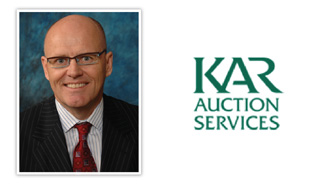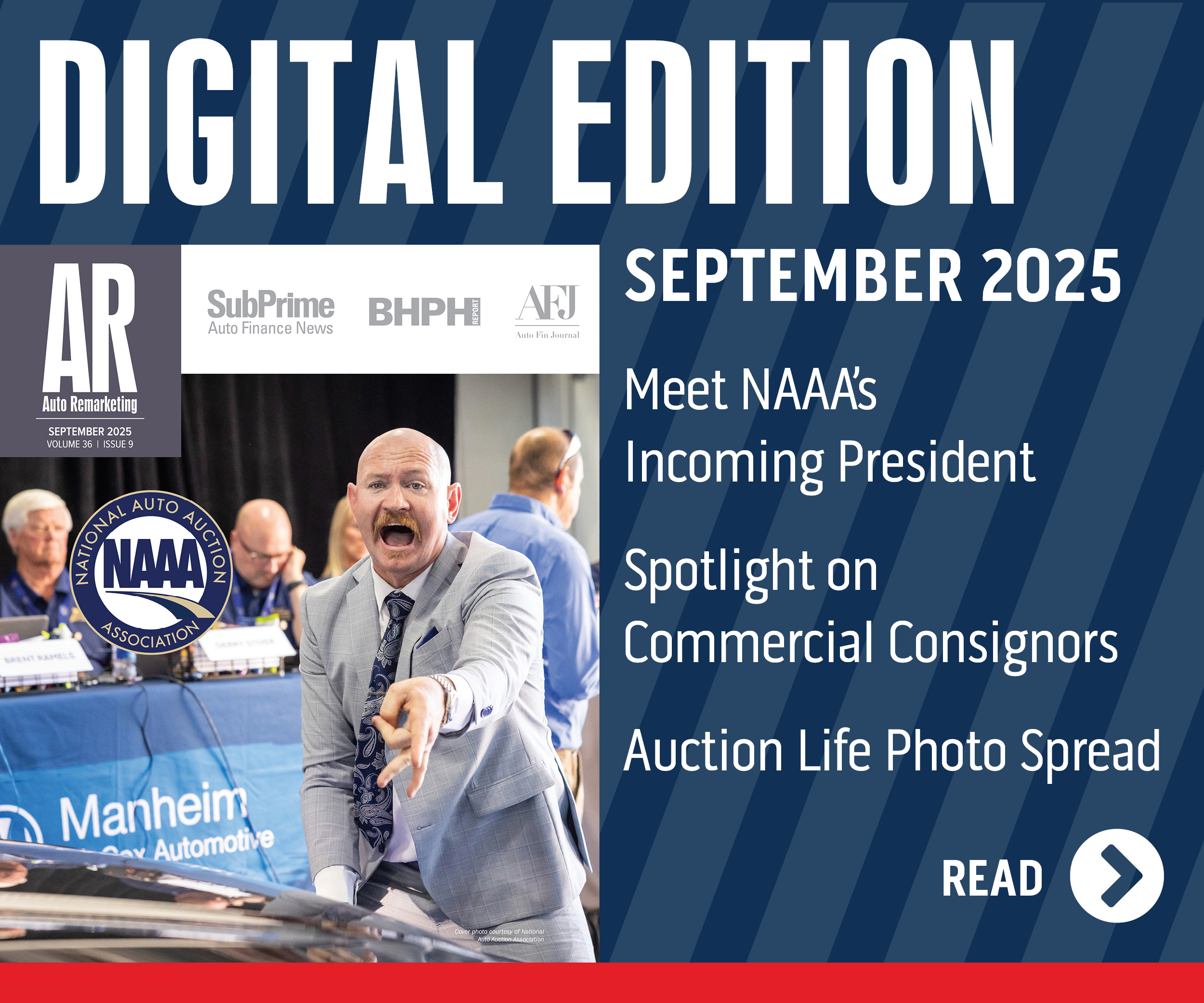Hallett Upbeat as KAR Posts Q1 Gains

After taking dozens of questions about the first-quarter performance of each of the company’s major subsidiaries — ADESA, Insurance Auto Auctions and Automotive Finance Corp. — KAR Auction Services chief executive officer Jim Hallett exhaled and left investors with one more upbeat comment.
“From our standpoint, we’re very pleased with the first quarter; very pleased, quite frankly, with how we’ve been able to work through the last several years as we’ve dealt with the headwinds on the whole-car side,” Hallett said on Tuesday during a conference call discussing first-quarter results.
“As we work through the second quarter and 2012 as things get better, we know things will significantly improve in ’13 and ’14 especially on the whole-car side where we have insight into what those volumes are going to look like. We feel good about our business and where we’re heading.”
To recap what Auto Remarketing previously reported, KAR opened the year by generating nearly a 5-percent uptick in revenue during the first quarter and increasing its adjusted EBITDA by approximately 6 percent.
KAR pulled in adjusted EBITDA of $134.9 million in the first quarter that ended March 31, compared to $127.3 million in the year-ago period. Revenues reached $506.9 million, versus $484.7 million in revenue in the first quarter of 2011.
ADESA’s Performance Contains More OPENLANE Contribution
Looking at ADESA’s first-quarter statement, the company’s revenue increased $2.3 million or 1 percent to $270.6 million as compared with $268.3 million for the same period a year ago.
ADESA indicated its gross profit increased $9.3 million or 8 percent to $122.6 million compared with $113.3 million for the first quarter of last year. That sum left ADESA’s gross margin at 45.3 percent, up from 42.2 percent in the year-ago quarter.
Hallett noted increases in revenue and gross profit primarily came from a 9-percent increase in the number of vehicles sold, a rise that included contribution from OPENLANE. Without the online component, Hallett acknowledged ADESA’s first-quarter volume figure would have been off 6 percent year-over-year.
The KAR boss also said ADESA’s used-vehicle conversion percentage declined to 62.6 percent but that reading was excluding OPENLANE transactions. A year ago, the conversion reading came in at 66.7 percent.
While Hallett conceded the decrease in conversion rate was primarily due to the relative increase in dealer consignment vehicles sold, he praised how successful ADESA’s dealer consignment initiatives have been.
“I’m particularly pleased with the dealer consignment segment, which is up 16 percent versus the prior year. Dealer consignment continues to offset the softness we’re seeing in commercial volumes,” Hallett stated.
“The work, effort and processes we’ve put in place in reference to dealer consignment over the course of the last three years are paying dividends today,” he continued.
When discussing auction volumes in general, Hallett also offered what he called “a couple words of caution.”
He continued with, “I think we need to be careful when we’re analyzing the ADESA volumes. We’re now selling vehicles at OPENLANE that were previously sold at ADESA and as we say the lines between ADESA and OPENLANE are starting to blur. The most important thing is we continue to sell as many vehicles as we can. I’ve always maintained that it’s not up to us to dictate where the car gets sold, whether it be on the Internet or at the physical auction. Let’s just get the most cars sold.”
Hallett also warned Wall Street analysts and other wholesale observers to be wary of quarterly volume trends.
“The quarterly industry data does not provide a complete picture of the industry performance. This data includes certain projections and excludes certain volumes particularly online closed sale volumes such as those from OPENLANE, ADESA and other competitors. We’re somewhat restricted by confidentiality agreements and the nature of the reporting,” Hallett stressed.
“Whereas I’m much more confident in the year-end NAAA industry survey, which is a survey of all (National Auto Auction Association) auctions, purely based on the volumes that are being reported rather than the detailed information the customers don’t want us to report,” he added.
As Online Activity Rises, Physical Facilities Still Needed
Another element Hallett touched on in regard to the whole-car auction is how ADESA sold 32 percent of its vehicles to online buyers during first quarter, prompting the KAR CEO to repeat the importance of the company’s physical locations.
“We expect this Internet component will continue to grow. We’re not sure where the sweet spot is, but we know it was at 32 percent in the first quarter,” Hallett said. “I think we’re continuously focusing on our (physical) footprint, continuously focusing on brick and mortar and real estate and how much of that we need.
“I’ve said before there’s always going to be a need for brick and mortar because we do need to park these cars, image this cars, marshal these cars and do the things we do in terms of reconditioning and other things,” he continued. That’s something we look at is how do we right-size this business with this Internet business.”
Immediately after Hallett finished his thought, chief financial officer Eric Loughmiller chimed in with, “Jim has told me this many times. The online platform gets only a few days to sell a car. After that, the car has to go somewhere. We need to have a home for that car.”
Update on Insurance Auto Auctions
Meanwhile over at Insurance Auto Auctions, Loughmiller shared that first-quarter revenue increased $13.5 million or 8 percent to $189.4 million, compared with $175.9 million for the year-ago period.
Loughmiller went on to highlight IAA’s first-quarter gross profit jumped $2.5 million or 3 percent to $78.0 million, up from $75.5 million in the year-ago quarter. He also acknowledged gross margin percentage ticked down to 41.2 percent from 42.9 percent.
After Hallett mentioned the increases in revenue and gross profit came as a result of an increase in vehicles sold of approximately 6 percent, he projected what IAA’s second quarter performance could be.
“While the mild winter was a benefit to ADESA in the first quarter, it will have a negative impact on Insurance Auto Auctions in the second quarter,” Hallett offered.
AFC Performance Discussion
Finally when highlighting AFC’s first-quarter statement, Loughmiller pointed out the company posted a 16-percent rise in revenue to $46.9 million from $40.5 million. He said AFC’s gross profit also increased $5.5 million or 18 percent to $36.9 million up from $31.4 million.
AFC’s gross margin came in at 79 percent, a shade higher than the year-ago figure of 78 percent. The company noted the increases in revenue and gross profit were primarily a result of a 17-percent increase in loan transaction units, partially offset by a 1-percent decrease in revenue per loan transaction.
While revenue per loan transaction decreased primarily as a result of a decrease in average loan values and an increase in the provision for credit losses that was partially offset by an increase in the average portfolio duration, Hallett again cheered AFC’s overall performance.
“It comes down to performance and the level of customer service the AFC team is able to provide,” Hallett insisted. “It’s a very strong management team we put together under Don Gottwald. These guys are on it. There’s continuous improvement in levels of service. At the end of the day, that’s what the dealer is looking for rather than a few bucks here or there. He’s looking for good, fast, efficient service.”


